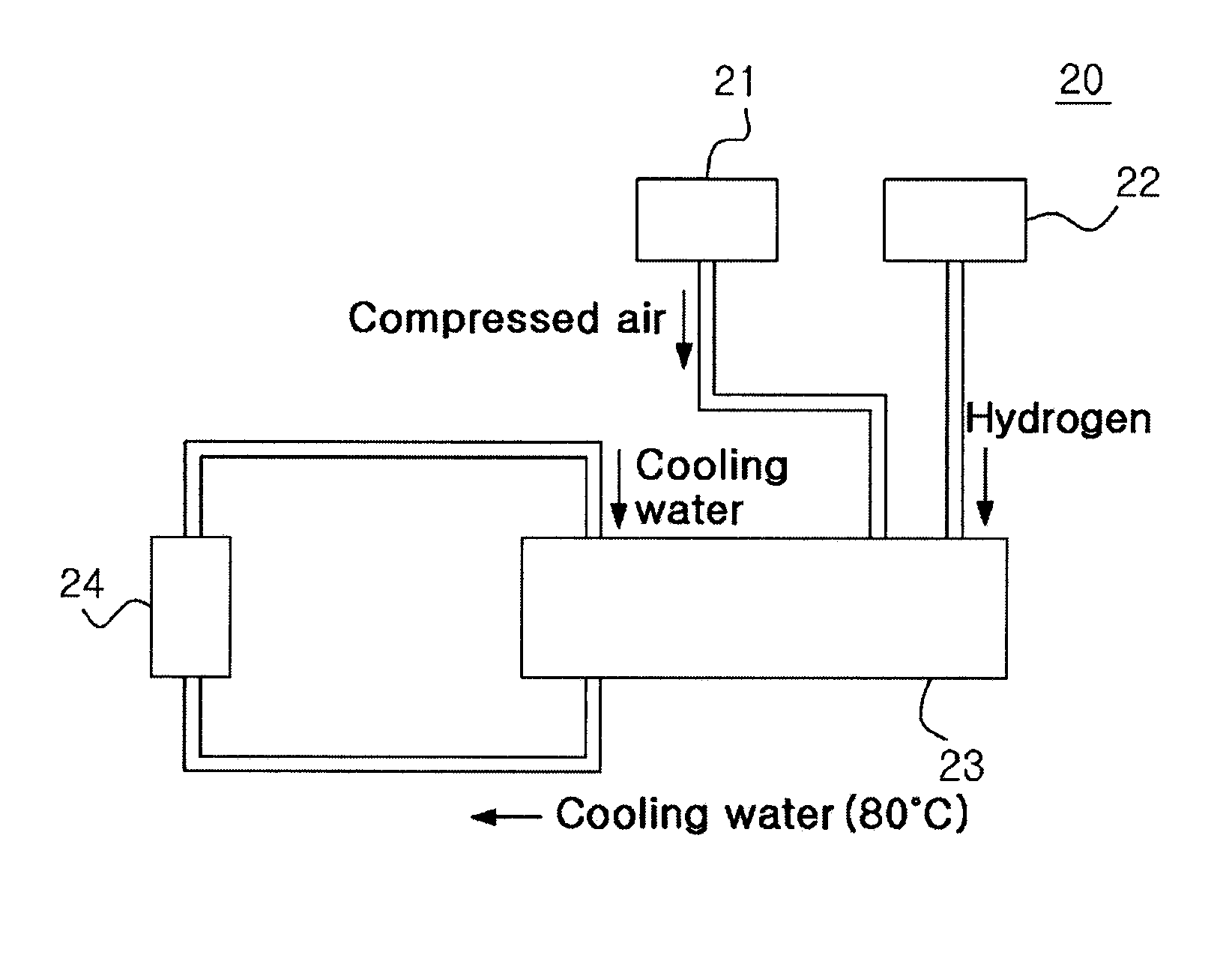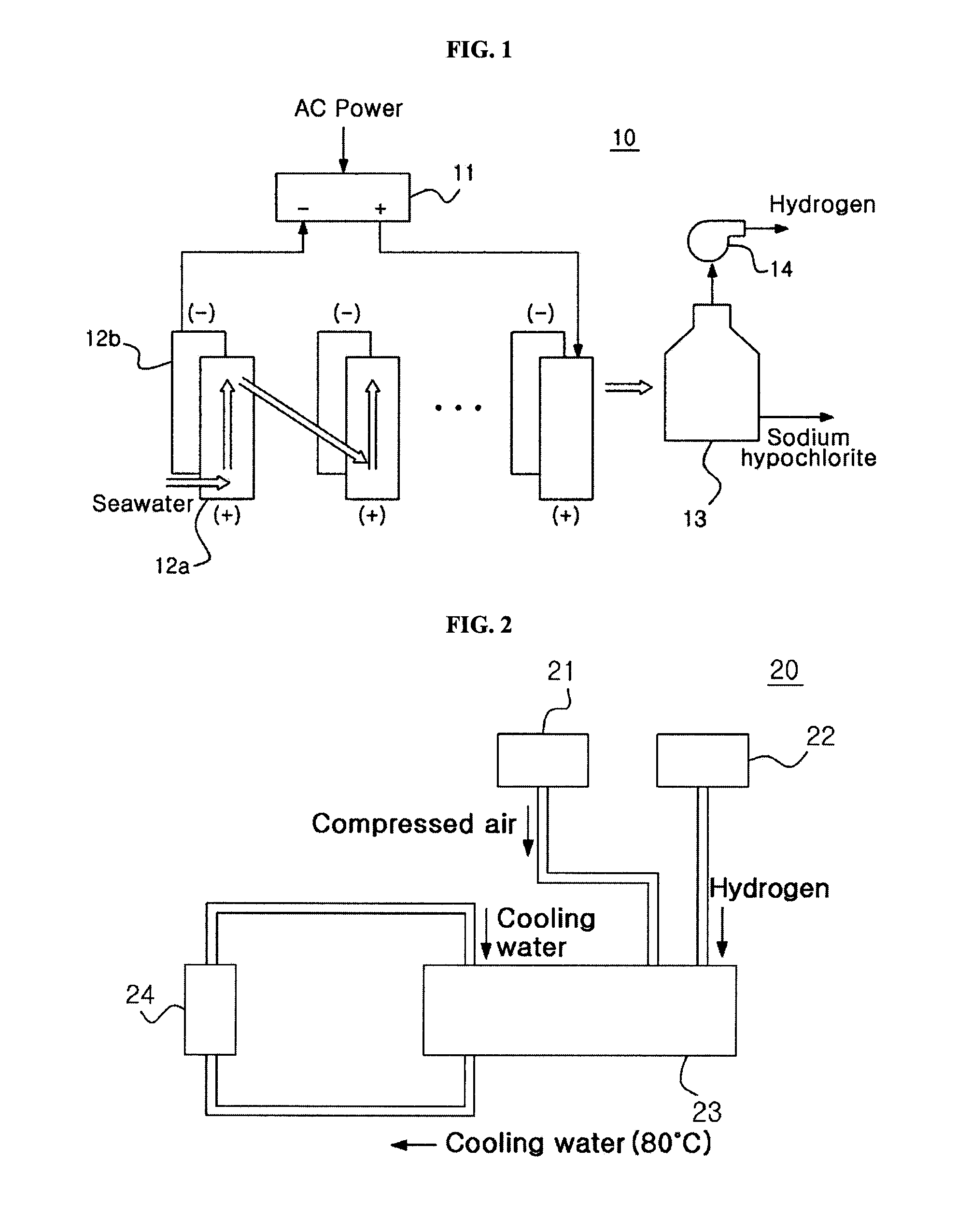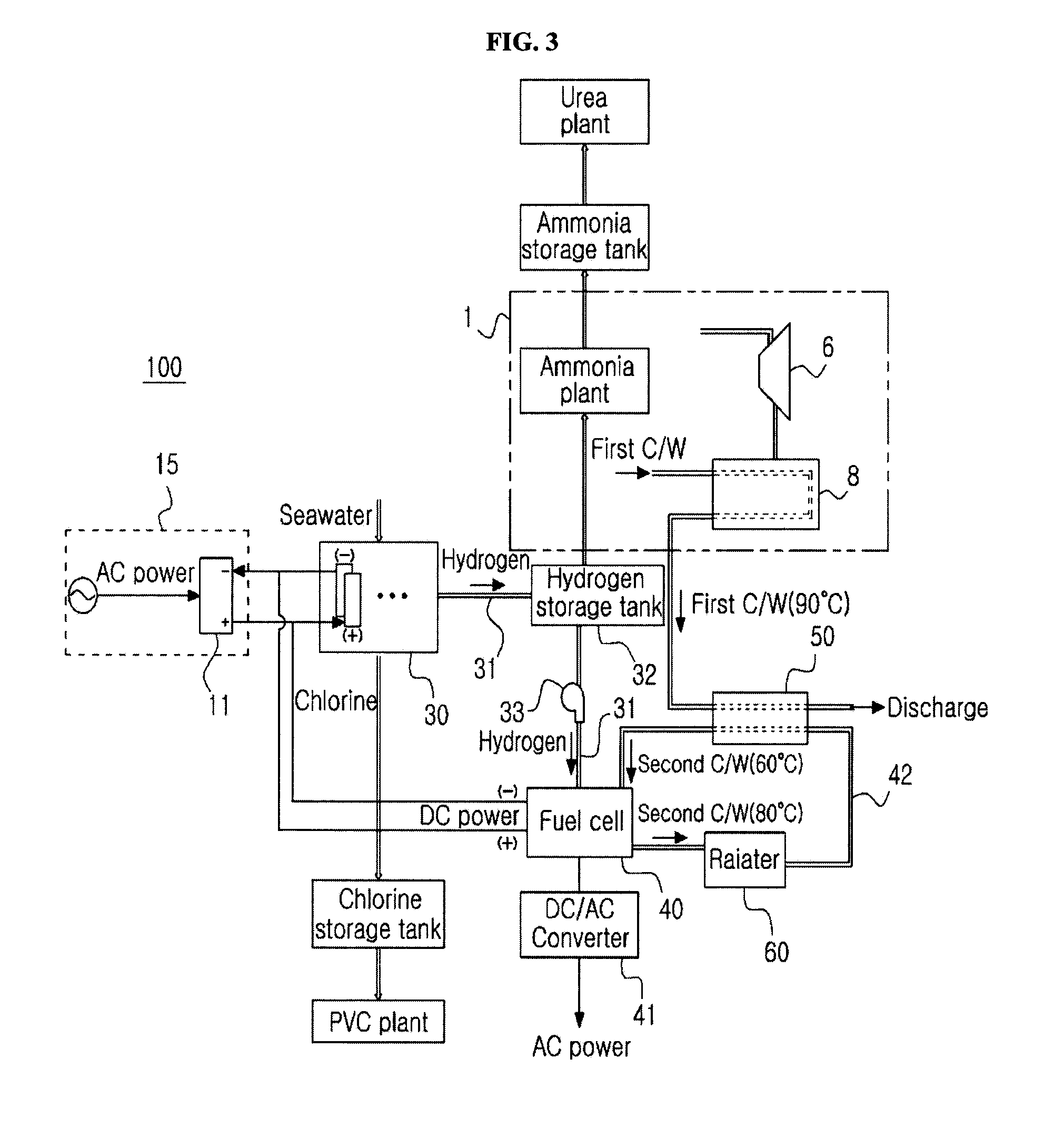Fuel cell using seawater electrolyzer, methods for producing caustic soda, ammonia, urea and PVC using the seawater electrolyzer and integrated system thereof
a technology of fuel cell and seawater, which is applied in the field of fuel cell system, can solve the problems of low efficiency, corrosion and damage of the cooling water intake site, and the vast amount of cooling water that power generation systems need
- Summary
- Abstract
- Description
- Claims
- Application Information
AI Technical Summary
Benefits of technology
Problems solved by technology
Method used
Image
Examples
Embodiment Construction
[0026]The present invention will now be described in more detail with reference to the accompanying drawings. The present invention provides an integrated system of a fuel cell based on a seawater electrolyzer, and chemical plants electrically connected to the fuel cell to receive power from the fuel cell. The integrated system of the present invention is characterized in that the fuel cell utilizes waste hydrogen from the seawater electrolyzer to generate electricity, and the chemical plants includes a plant for producing caustic soda in the seawater electrolyzer, a plant for producing PVC using chlorine from the seawater electrolyzer, a plant for producing ammonia using hydrogen from the seawater electrolyzer, and a plant for producing urea using the ammonia and carbon dioxide released from a neighboring power plant.
[0027]The constitution of the seawater electrolyzer 10 is illustrated in FIG. 1. Referring to FIG. 1, a rectifier 11 converting alternating current (AC) power to direc...
PUM
| Property | Measurement | Unit |
|---|---|---|
| Temperature | aaaaa | aaaaa |
| Temperature | aaaaa | aaaaa |
| Temperature | aaaaa | aaaaa |
Abstract
Description
Claims
Application Information
 Login to View More
Login to View More - R&D
- Intellectual Property
- Life Sciences
- Materials
- Tech Scout
- Unparalleled Data Quality
- Higher Quality Content
- 60% Fewer Hallucinations
Browse by: Latest US Patents, China's latest patents, Technical Efficacy Thesaurus, Application Domain, Technology Topic, Popular Technical Reports.
© 2025 PatSnap. All rights reserved.Legal|Privacy policy|Modern Slavery Act Transparency Statement|Sitemap|About US| Contact US: help@patsnap.com



